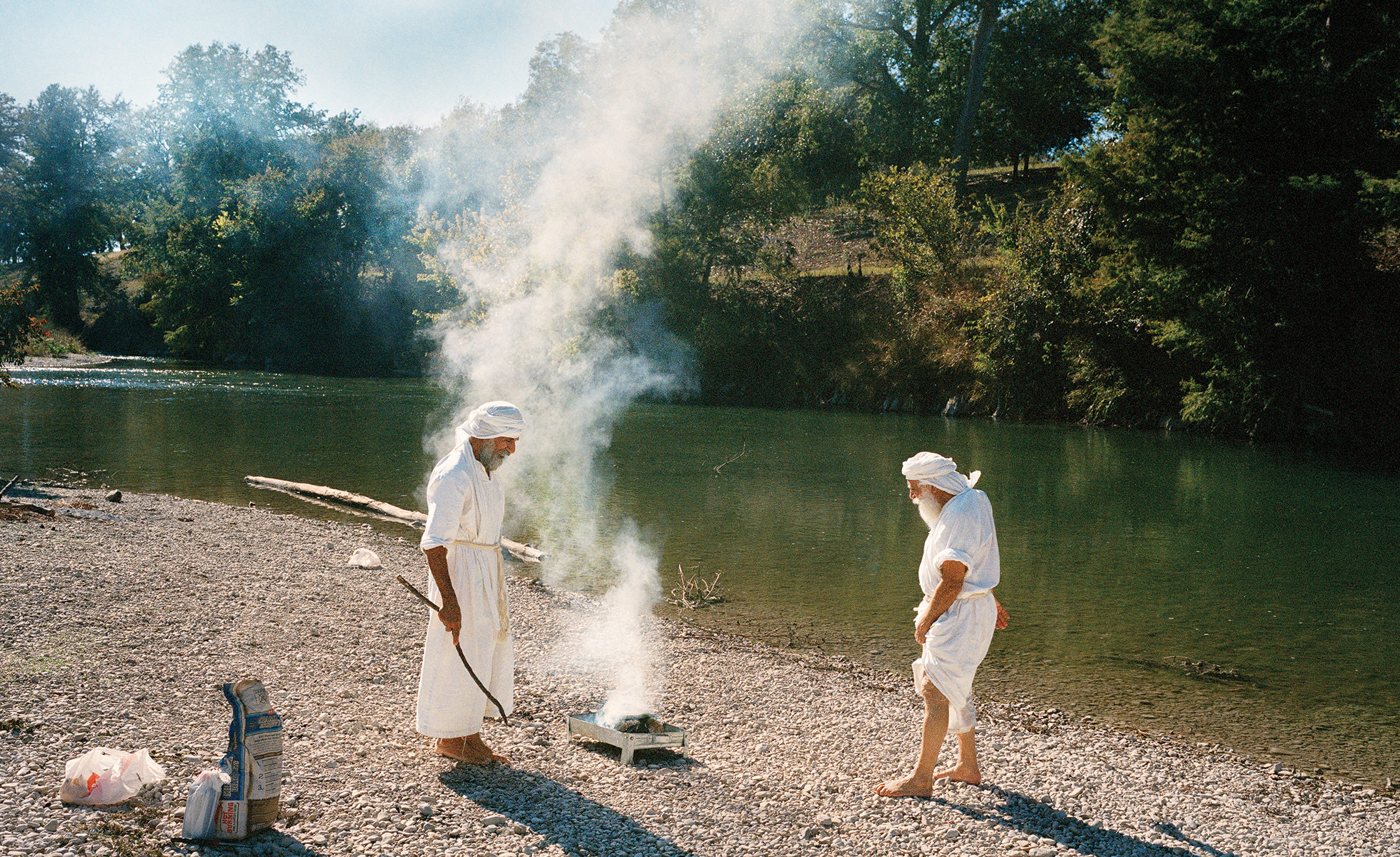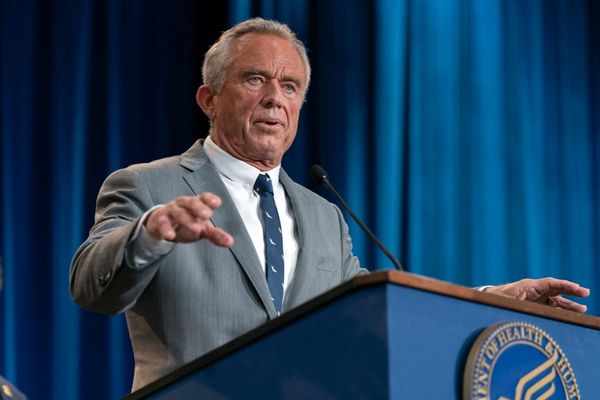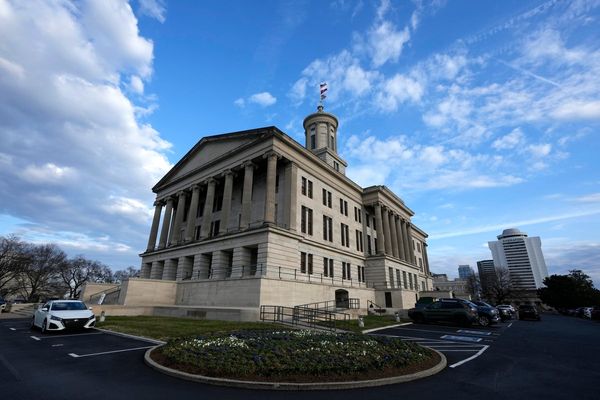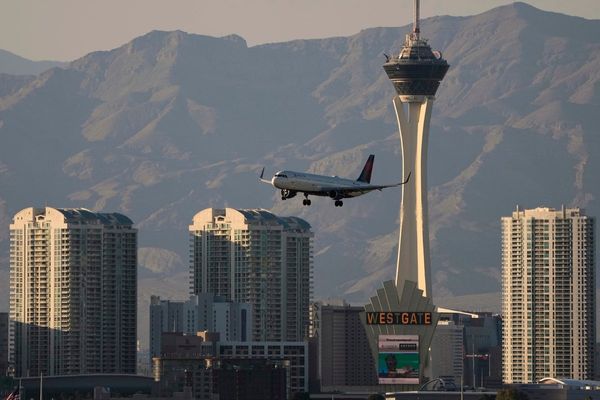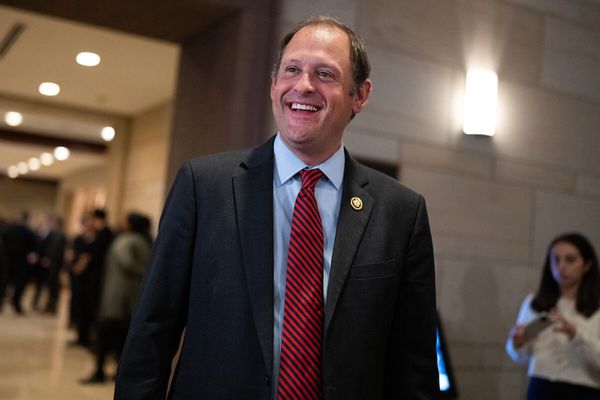Against the Current
If the Mandaean religion survives, it will be partly because of the refuge it found in Central Texas.
Text by Robyn Ross
Photos by Matthew Busch
February 17, 2020
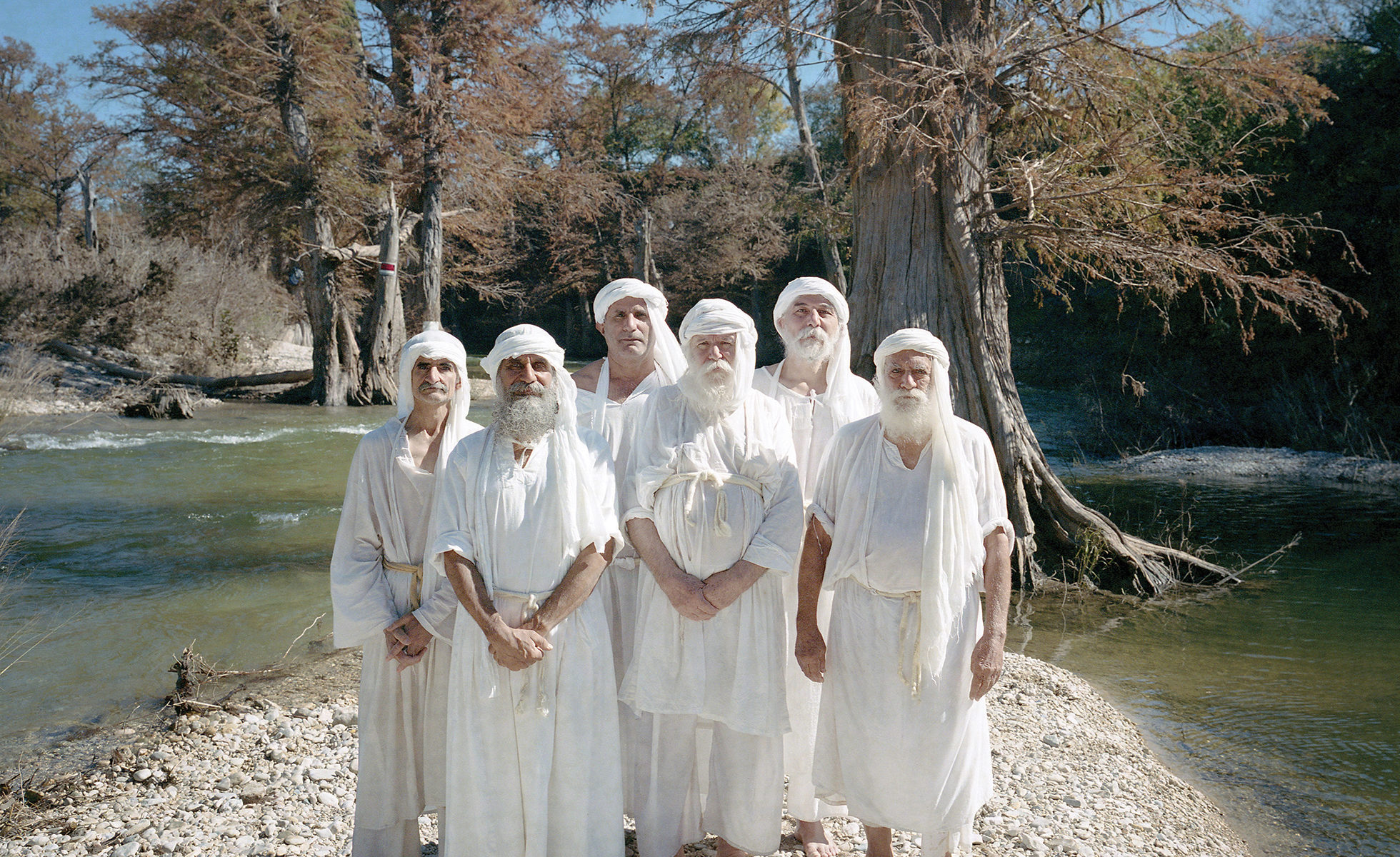
Dressed in white, six Mandaean men stand by the Guadalupe River under a clear November sky. Some wear wooden sandals. Others wait barefoot at the water’s edge, feeling the sun-warmed stones press into the soles of their feet.
One by one, the men step closer to the river and, with a religious celebrant called a tarmida, ask the water’s permission to enter. The river here at Sisterdale, a few miles north of Boerne, flows clear and cool—colder in the shadows of the cypresses that cling to its banks. Each man wades in and sits in the shallows, where the water rises to his chest. The tarmida pours handfuls of water over his head and prays for him while he asks for forgiveness and promises God he will be a good person. Each man has woven a homemade ring of dwarf myrtle, called a klila, and slipped it onto the little finger of his right hand. In the water, the tarmida takes the klila and places it under the turban on the man’s head as a symbol of wisdom and light.
The other men—the women’s turn will come later—wait on the bank, their white garments stirring in the breeze. When everyone is finished, standing on the rocks in water-flattened clothes, the men acknowledge the holiness of the place and the angels who have witnessed the ritual. The tarmida gives each person a tiny piece of bread and three teaspoons of holy river water: two sips to drink, representing the soul and spirit, and one to toss over the left shoulder, for the body. When the prayers are over, the men toss their klilas into the river. The myrtle rings bobble downstream, spinning in the current as they drift out of sight.
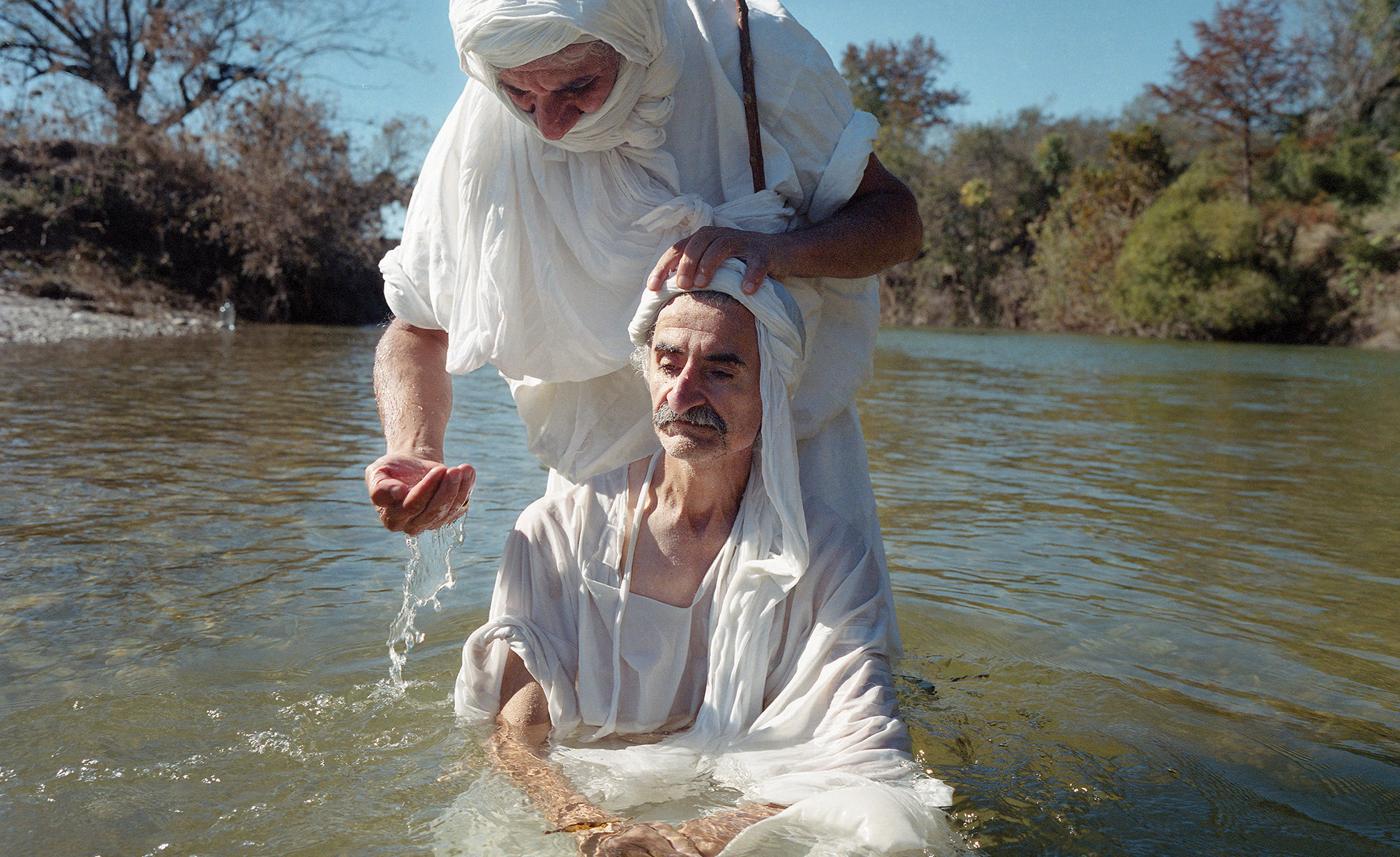

Baptism is the central ritual of the Mandaean faith, a monotheistic religion scholars date to the first or second century. Mandaean baptism occurs at multiple important moments in a person’s lifetime, such as after birth and before and after weddings, as well as anytime an adherent needs a fresh start. Mandaeans believe angels taught this form of baptism to Adam, the first man, and that every generation since has practiced the same ritual—including John the Baptist, whom Mandaeans count as one of their chief prophets.
Although the Mandaean faith champions nonviolence, persecution in the religion’s Middle Eastern homeland has led many to flee to the United States—particularly San Antonio. Shahram Ebadfardzadeh is a leader in the Central Texas Mandaean community and an eshkenda, a helper and witness to religious rituals. A twinkly-eyed 53-year-old given to wordplay and deadpan humor, he estimates that 400 members of his extended family have settled in Central Texas. They chose the area because it feels familiar, he says. “When we come here, it’s like our home,” says Ebadfardzadeh, who’s from the Iranian city of Ahvaz. “They’re both hot places, close to a gulf, with many rivers. In almost all seasons, we can get baptism.”

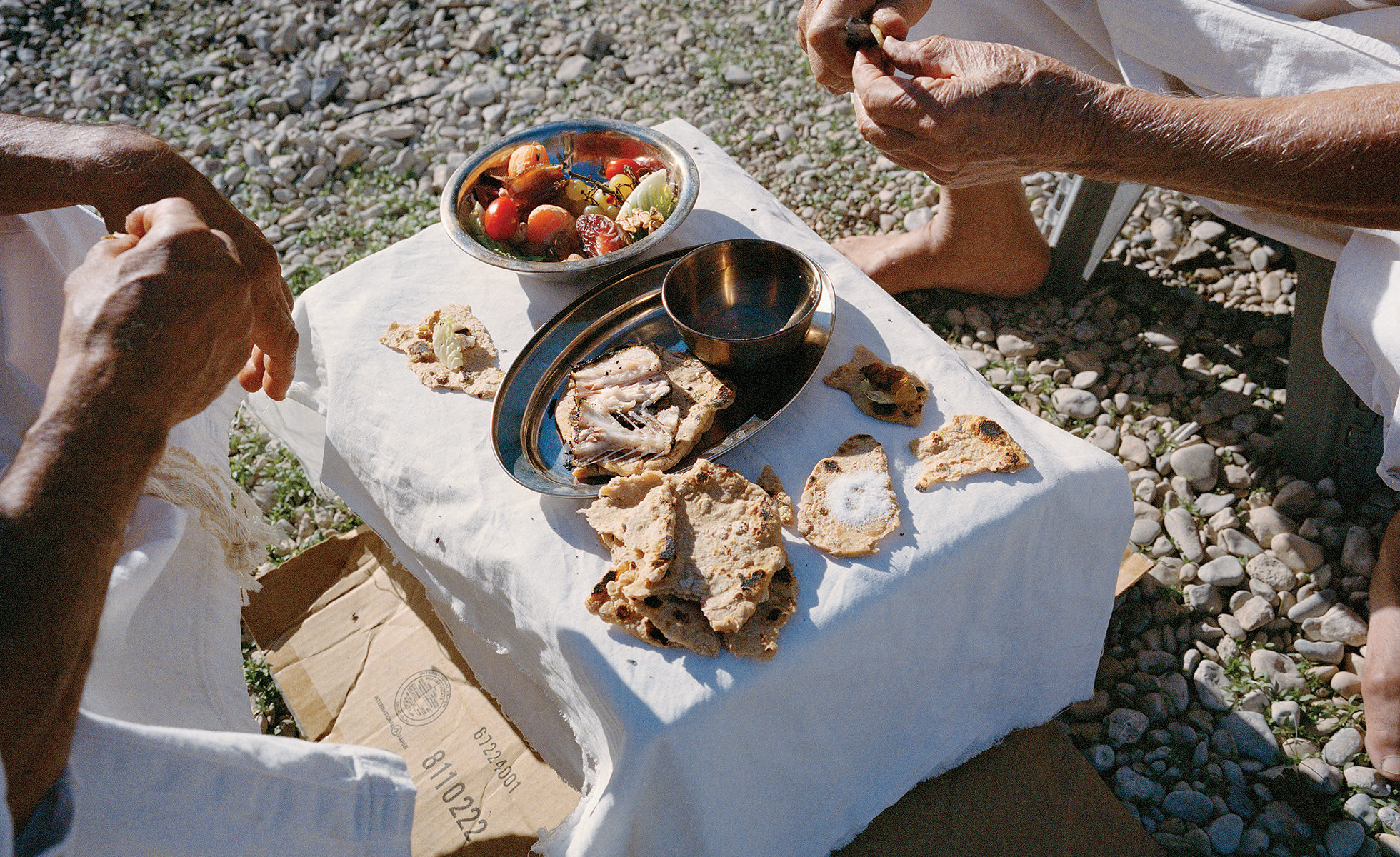
Mandaeans—an ethnic group as well as a religion—historically lived in southeast Iraq and southwest Iran, but in recent decades, thousands have moved overseas. There are only about 60,000 Mandaeans worldwide. “You could put all the Mandaeans in a football stadium, and we couldn’t fill it,” Ebadfardzadeh laments. The religion does not accept converts, and the geographic dispersal of the community makes it difficult for Mandaeans to find spouses within the faith. The population is divided roughly equally among the Middle East, Europe, Australia, and the United States. About 2,500 Mandaeans live in San Antonio, which, along with Boston and Detroit, is one of the largest concentrations in the nation. Several hundred more live in Austin, with smaller communities in Amarillo and Houston.
Most Iranian Mandaeans who have come to San Antonio have done so through the Lautenberg Amendment, enacted by Congress in 1990 to accept persecuted religious minorities from the Soviet Union and expanded in 2004 to include Iranian religious minorities. A family sponsor in the United States will apply on behalf of a relative in Iran, who, after an initial round of background checks, will travel to a refugee resettlement processing center in Vienna. They’ll wait several months there for more background checks to be completed. Once cleared, they’re granted refugee status and can come to the United States, where groups like San Antonio’s Catholic Charities help them find housing and work.
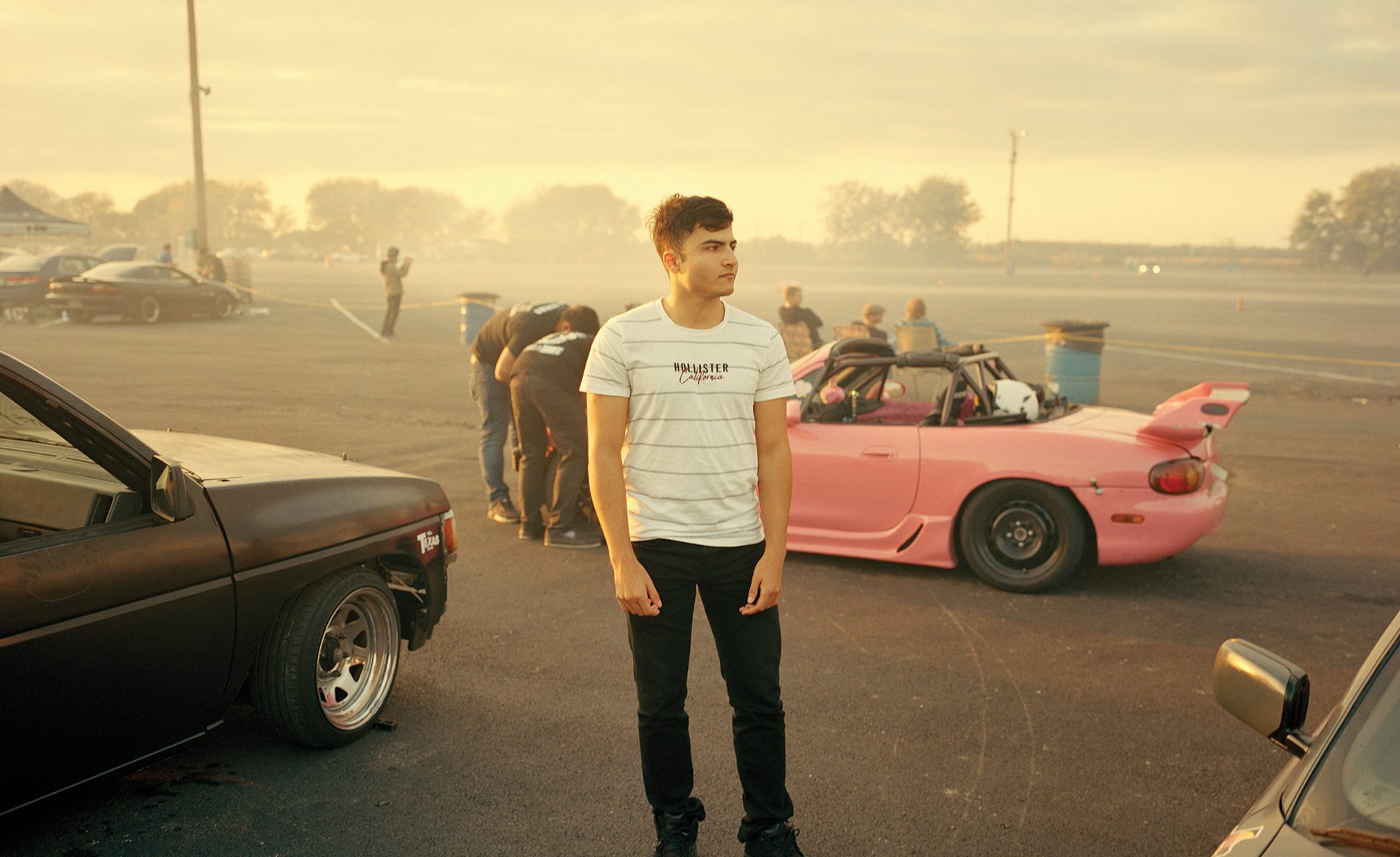
But in the past few years, the Iranians’ time in Vienna began to stretch from three months to six or more. Shortly after President Donald Trump took office in 2017, he temporarily suspended the United States Refugee Admissions Program. After the program was reinstated later that year, many Iranian refugees were denied visas to the United States. Trump has repeatedly cut the number of refugees accepted each year, from 50,000 in the 2017 fiscal year to 18,000 for 2020. Since 2006, when Catholic Charities began resettling Iranian refugees through the program, Mandaeans arrived at a rate of just under 100 per year. That number dropped to three in 2018.
While Mandaeans in Iran find that their educational and professional opportunities are circumscribed because of their religion, those in Iraq face threats of physical violence. The U.S.-led invasion in 2003 toppled Saddam Hussein’s government, creating a vacuum filled partly by Muslim extremists who did not tolerate religious minorities. Mays Sagar, who now lives with her husband, Sam, and two young children in San Antonio, worked as a physician in a Baghdad hospital. Mandaean women do not wear hijab, but Mays says that after the war, women who did not cover their heads were threatened. After two close calls with kidnappers, Mays left for Syria. Her brother was later kidnapped and tortured by captors who told him they wanted to kill his whole family because he was Mandaean. Soon after, Mays’ family was approved to immigrate to Canada. Mays moved to San Antonio after she and Sam, an Iraqi Mandaean already in Texas, were introduced via email by mutual friends.

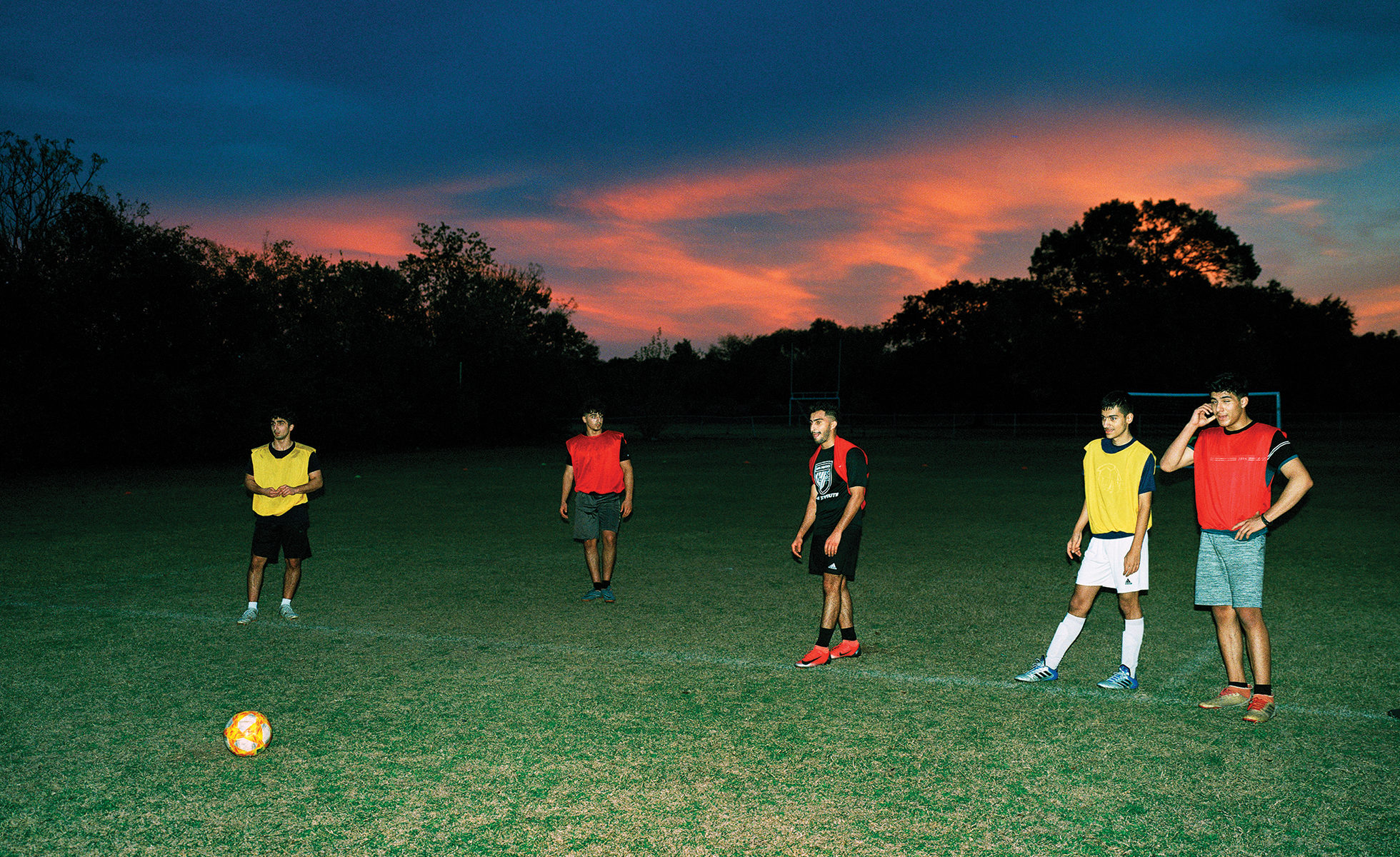
The Sagars, who speak Arabic at home, and Ebadfardzadeh, who speaks Arabic, Persian, and Mandaean, all work as interpreters. Other Mandaean refugees’ employment prospects are, like those of many immigrants, initially limited by their English ability. Mandaeans in both Iran and Iraq have long worked in the gold trade, a tradition that continues at multiple jewelry stores in San Antonio and Austin malls.
The Mandaean community in San Antonio has bought a house to use as a cultural center for Sunday gatherings and weddings. In the Middle East, Mandaeans would have a religious building, a mandi, close to the water, but the city of San Antonio doesn’t have the type of clean, flowing, accessible river Mandaeans need for baptism. So they go to Sisterdale or, if the Guadalupe is low, Blanco State Park. In the future, Ebadfardzadeh says, the group would like to buy land along the river, which would allow them to construct a building where those being baptized can change into their white garments. The community has already established a cemetery outside Bertram, northwest of Austin, to accommodate the Mandaean practice of burying bodies as soon as possible after death—which doesn’t always fit the timetable of American funeral homes.
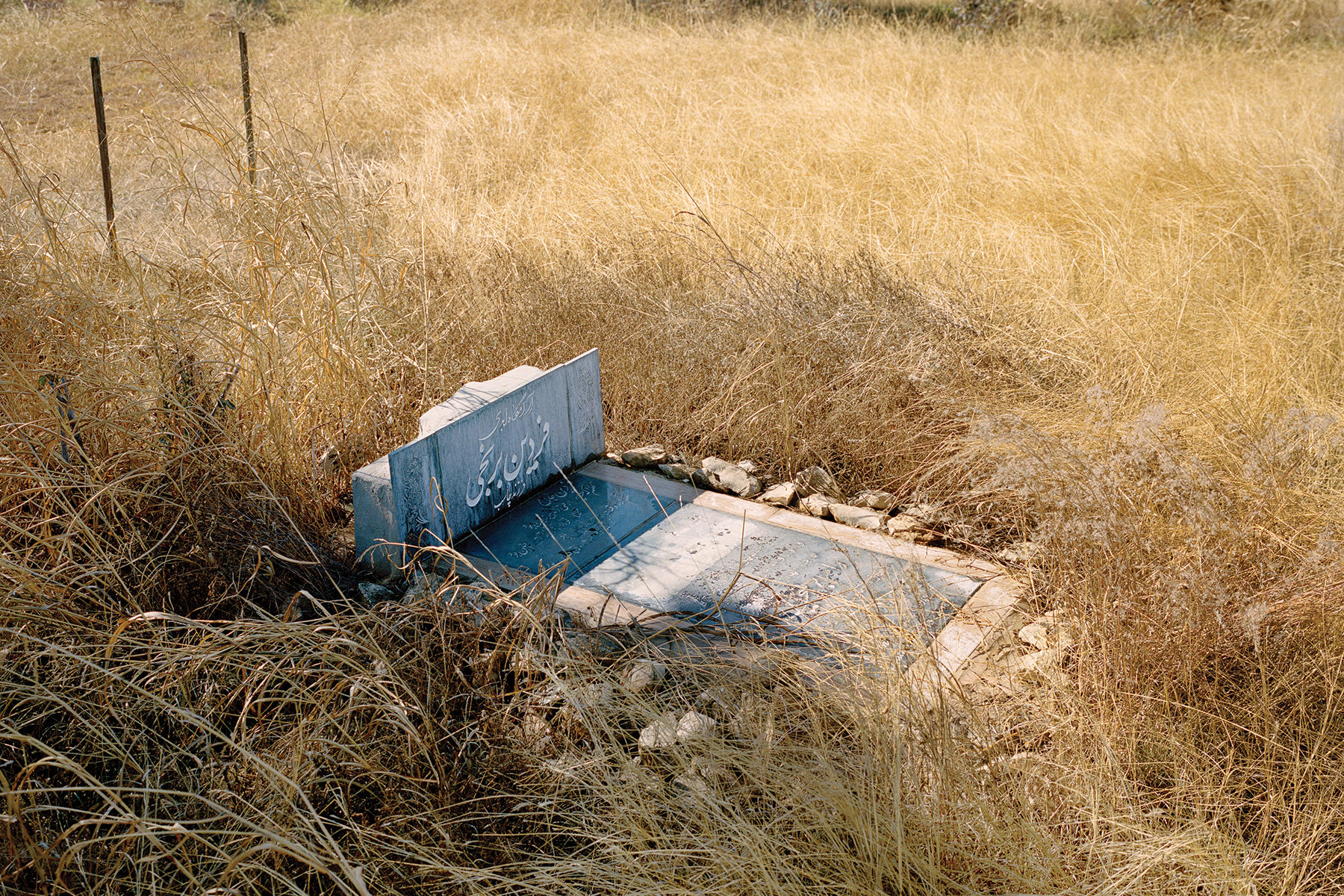
Even as the community puts down roots in Central Texas, the future of the Mandaean people is uncertain. Bassam Sagar, one of three tarmida in the United States—and Sam’s brother—lives in San Antonio. He can perform baptisms, but weddings require the services of a man with a higher religious rank, a ganzibra, who must travel from overseas. Volunteers who know the Mandaean language, a dialect of Aramaic, teach classes at the cultural center, but everyone’s busy, and attendance is sporadic.
“We’re in this discussion all the time,” says Mays Sagar, gesturing to Sam. “What will the future be?”
On an overcast fall Saturday, the two sit in the living room of their modest apartment, where a Mandaean calendar hangs in the hallway and the television is playing American cartoons. Mays bounces 3-month-old Heylana on her lap while Ilan, 2, rides around in a battery-powered car that resembles the character Lightning McQueen in the Pixar movie Cars.
For both Sam and Mays, it was important to marry an Iraqi Mandaean. They gave their children traditional Mandaean names, and they are raising them in the religion. But the adults are keenly aware that the children, who will grow up steeped in American culture, will ultimately make their own choices about whether to keep the faith and whom to marry.
“What’s the future for their generation?” Mays asks. “Mandaeans are scattered all over the world, and after 50 or 100 years, maybe we will disappear as a religion. Our concern is how to keep the culture and religion alive.”
